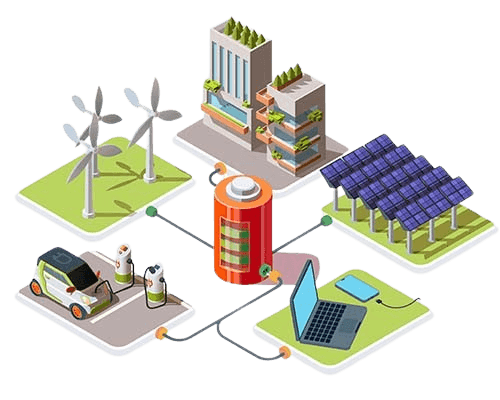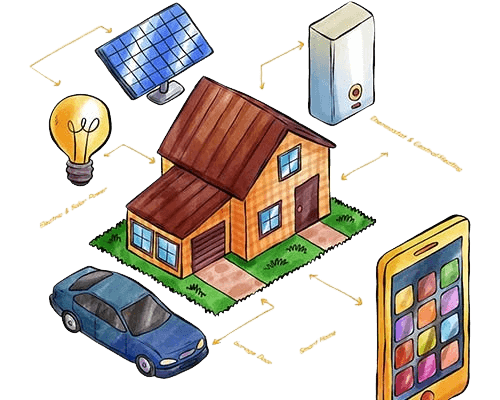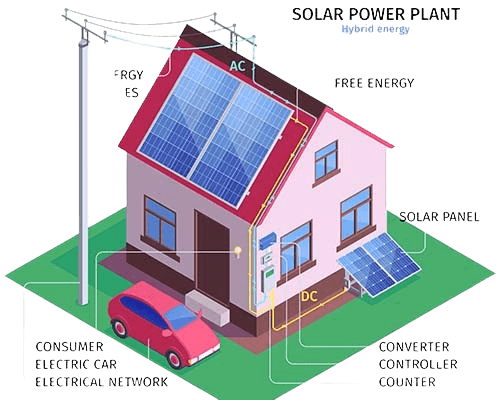
Generate your own power and reduce monthly electricity bills through efficient solar energy use and net metering benefits.

Without batteries, grid-tied systems are easier to install, cost-effective, and require minimal maintenance.

Use renewable solar energy during the day and rely on grid backup when needed — a smart, eco-friendly solution.

Off-grid systems run independently, storing solar energy in batteries — ideal for areas without grid access.

Energy is stored in batteries, so you always have power — day or night, even during long power outages.

Since you're not using the grid, there are no monthly electricity bills. It’s a one-time investment for long-term freedom.

Hybrid systems use both solar and grid electricity, ensuring reliable power day and night.

Store extra solar energy in batteries for backup during load shedding or nighttime use.

The system automatically switches between solar, battery, and grid — giving you uninterrupted energy.
A grid-tied solar system generates electricity using solar panels and feeds it directly into the public electricity grid. It typically includes solar panels, an inverter, and net metering capability. The system allows a user to use solar power during the day and draw power from the grid when solar production is insufficient (e.g., at night or on cloudy days). If the solar panels produce more electricity than the home consumes, the excess power is sent to the grid, often earning the homeowner credits or compensation through a process called net metering.


An off-grid solar system is a self-sufficient power solution that operates without any connection to the public electricity grid. It is commonly used in remote areas or locations where grid access is unreliable or unavailable. The system includes solar panels to capture sunlight, batteries to store energy, a charge controller to regulate power flow, and an inverter to convert DC electricity into usable AC power.
A hybrid solar system is a versatile energy solution that combines the benefits of both grid-tied and off-grid systems. It uses solar panels to generate electricity, which powers the home, charges a battery bank, and can also be sent to the utility grid if there's excess. The system includes a hybrid inverter and battery storage, allowing it to supply power during outages or when solar production is low. This setup offers energy independence, backup power, and potential savings through net metering, making it a flexible and reliable choice for both urban and rural applications.
